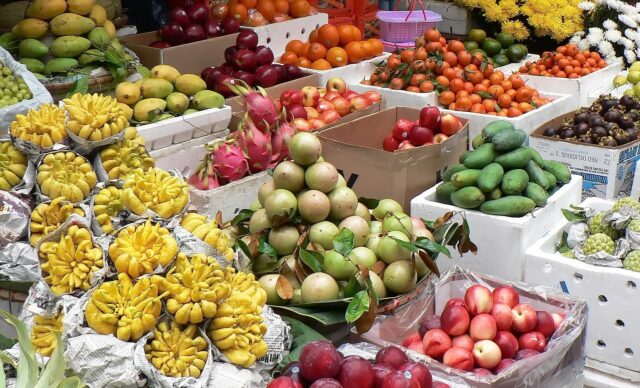The reopening of China has seen a number of sectors benefit across Asia. Perhaps none more so than Vietnamese fruit where exports have increased and prices skyrocketed in the immediate aftermath of mainland borders opening.
VnExpress reported that departments of agriculture and rural development in the provinces of Gia Lai, Long An, An Giang and Tien Giang have seen surging prices for several types of fruits since the start of the year.
Durian, dragon fruit and jackfruit have been the most in demand with prices for these doubling or even tripling in some cases. Of course, many fruits in Vietnam are currently out of season which means the spike in demand comes at a low point for supply.
It’s not just the tropical fruits of interest to the Chinese market. Sweet potato, taro and watermelon are also highly sought after. Traders have reported that the sweet potato price is at its highest level in four years.
Prices are expected to come down once these items are back in season, but Chinese demand for these products is forecast to grow even more. That means they are unlikely to return to previous levels.
Vietnam Fruit Association General Secretary Dang Phuc Nguyen told the website 19.2 percent of Vietnam’s agricultural, forestry and fishery products are exported to China. He added the end of the country’s “zero COVID” policy means there is now significant export potential for Vietnamese fruits and produce.
Also Interesting: Vietnam fish sauce requires a pinch of promotion
Interesting Analysis
Why anyone would ever eat a durian remains a mystery to me. Beyond that, this is the first of many stories you can expect to hear about Chinese demand for fruit exports from Southeast Asia. This big business was significantly affected by COVID-19 and the fact sales returned so rapidly is a positive sign for farmers in Vietnam, Thailand and elsewhere.
On the other hand, it may not be so great for local fruit buyers in those countries who are likely to see prices rise for domestically grown products. Ultimately, the full impact of this won’t be known until after these fruits are in season once again.
Keep Reading: Asian firms invest in Vietnam wind farms


































